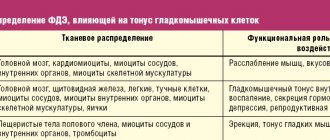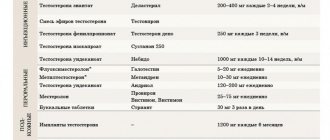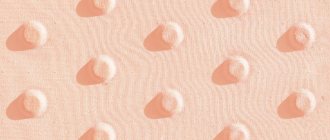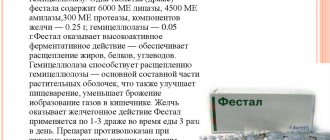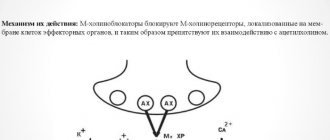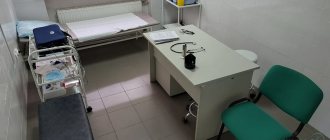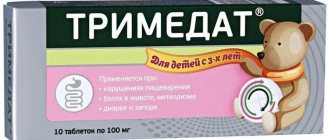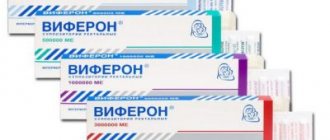Antiulcer drugs are a therapeutic group of drugs intended for the treatment of gastric and duodenal ulcers.
Despite the fact that the term antiulcer drugs has firmly entered the medical lexicon, it is more correct to talk not about antiulcer drugs, but about drugs for the treatment of so-called acid-dependent diseases, which are based on the aggressive, damaging effect of hydrochloric acid on the upper parts of the digestive tract.
In addition to peptic ulcers, such diseases include inflammation of the gastric mucosa, called gastritis. Gastritis usually precedes the development of peptic ulcers. If the duodenum is also involved in the inflammatory process, they speak of gastroduodenitis.
Despite the prevalence of such diseases as peptic ulcers of the stomach and duodenum, the causes that cause them remain unknown today.
A number of factors are believed to play a role in the development of these diseases. These include: excessive secretion of hydrochloric acid by the stomach, chronic stress, unhealthy diet, and, finally, genetic predisposition - the presence of these diseases in close relatives.
Relatively recently, the discovery was made that peptic ulcer disease can be of an infectious nature. A microorganism capable of living only in the very acidic environment of the stomach and which is no longer found in other organs was isolated from the stomach of patients with peptic ulcer disease.
It was found that this pathogen is capable of damaging the gastric mucosa, which is subsequently corroded by hydrochloric acid. This microorganism is called Helicobacter pylori, or simply Helicobacter pylori.
At the same time, this pathogen is detected in many people who do not have gastric ulcers. Perhaps several factors must coincide for the development of peptic ulcer disease. But this question, as already mentioned, remains open today.
Principle and mechanism of action of gastroprotectors
Depending on the principle of action, gastroprotectors can be film-forming or non-film-forming. Specialists separately identify prostaglandins. Doctors cannot accurately trace the mechanism of action of all gastroprotectors, since the effect on the body differs depending on the composition and some other features.
- Film-forming drugs create a kind of protective film on the surface of the stomach, which prevents the negative effects of food, drinks and other substances on the tissue. Under this film, gradual restoration of the mucous membranes occurs, and the progression of the disease stops. Such drugs are prescribed when there is damage to the tissues, and hydrochloric acid, necessary for normal digestion, negatively affects the walls of the stomach.
- Non-film-forming drugs usually suppress the production of hydrochloric acid, which leads to a weakening of the negative effects on the walls of the organ. An additional property of these medications is the ability to activate the body's natural defenses, which leads to tissue restoration and improvement of general condition.
- Prostaglandins are not used so often for the treatment of gastric pathologies due to the increased risk of complications. The principle of their action is based on increasing the production of mucus and substances with protective properties by the stomach.
Basics of therapy and application features
For effective treatment of gastric ulcer it is necessary to adhere to tactics that will allow blocking all known mechanisms of disease development.
The following tactics are usually used:
- Nutrition and diet. Food should be taken 4-5 times a day in small portions. Avoid hot, spicy, overly salty foods. Carbonated drinks and very hot foods are contraindicated.
- Prevention of stress. Relaxation and walks in the fresh air. In some cases, sedatives may be indicated.
- Pharmacotherapy is aimed primarily at reducing the secretion of hydrochloric acid, using healing agents, and destroying Helicobacter pyloricus with antibacterial agents.
The duration of treatment is determined individually by the doctor. The effectiveness of the treatment is assessed by gastroduodenoscopy or x-ray, and the general condition of the patient is also assessed.
Advantages and disadvantages
Gastroprotectors (the list of drugs with proven effectiveness includes drugs with different components in their composition) have many advantages, therefore they are often used to treat pathologies of the digestive tract and prevent complications:
- They help to quickly eliminate the manifestations of diseases, which alleviates the condition of patients.
- Can be used for a long time. This is especially important for patients who suffer from chronic forms of disease.
- Drugs from this group can be used in combination with other medications to increase the effectiveness of therapy.
- Less likely to provoke negative reactions when used correctly than other medications.
- Many products have a positive effect not only on the mucous membranes, but also stimulate regeneration processes, improve microcirculation and tissue nutrition, and have a beneficial effect on the entire digestive system.
- Prevents the development of complications such as peptic ulcers or perforation of the stomach walls against the background of damage to all its layers.
Such advantages make it possible to use medications for different patients and at different stages of the pathological process.
But I also have disadvantages. Some of them are sold in pharmacies only with a doctor's prescription and are used only for the treatment of adults, as they act aggressively. Many medications are used only in long courses because they do not have a therapeutic effect immediately. Another disadvantage is the dosage form of medications, which is not always convenient to take.
pharmachologic effect
Drugs belonging to the groups of histamine H2 receptor blockers, proton pump inhibitors and M1 - anticholinergic blockers have the ability to reduce the secretion of hydrochloric acid and are the drugs of choice among themselves. This means that one of the drugs in this group is chosen for treatment.
Antacids do not reduce the secretion of hydrochloric acid, but rather neutralize it. They are rarely used to treat gastric ulcers, and sodium bicarbonate is contraindicated in this disease.
Gastroprotectors and prostaglandins help relieve inflammation and heal the ulcer surface.
The complex prescription of these groups of drugs in combination with antibacterial agents leads to the elimination of the pathological process.
Indications for use
Gastroprotectors are prescribed for various diseases of the digestive tract. The list of drugs is extensive and allows you to select products with proven effectiveness that have the maximum therapeutic effect:
- Peptic ulcer in acute and chronic form with damage to the walls of the stomach. The remedies are also used in cases where not only the stomach is affected, but also the duodenum.
- Gastritis with increased and decreased acidity of gastric juice. Some medications in the group are not prescribed for low acidity, but in most cases medications are indicated.
- An erosive form of gastritis with the threat of developing a peptic ulcer.
- Dyspeptic disorders due to damage to the mucous membranes of the stomach. At the same time, medications help eliminate heartburn, nausea, vomiting, pain and belching.
- The development of gastritis and peptic ulcers against the background of frequent stressful conditions, nervous disorders, chronic psycho-emotional disorders or overwork.
The drugs can be used in the treatment of ulcers that develop while taking non-steroidal anti-inflammatory drugs.
Gastroprotectors
Gastroprotectors are drugs whose name comes from two Greek words: gaster - stomach and protecto - to protect. This means that gastroprotectors are “protectors” of the gastric mucosa. One such drug is bismuth tripotassium dicitrate.
What can cause damage to the mucous membrane? Too hot, cold or spicy food irritates them. Hydrochloric acid, which is a component of gastric juice, can also damage the mucous membrane. The gastric mucosa can be injured due to, for example, uncontrolled use of non-steroidal anti-inflammatory drugs or due to stress.3
Mechanisms of action of gastroprotectors:
Formation of biological film. It protects damaged areas of the mucous membrane from the effects of the bacterium Helicobacter pylori, gastric juice and helps to start recovery processes.
Antibacterial effect. Gastroprotectors reduce the activity of the bacterium Helicobacter pylori, which can maintain inflammation in the mucous membrane.
Healing damage. Gastroprotectors help stimulate restoration processes in the damaged mucous membrane. This occurs due to a decrease in the number of the bacterium Helicobacter pylori, as well as activation of the production of protective mucus and prostaglandins - substances that help stop inflammation.1 Gastroprotectors can improve blood circulation in the damaged area and trigger the processes of restoration of the mucous membrane.2
Use of gastroprotectors
Among the indications for the use of the drug bismuth tripotassium dicitrate, one of the group of gastroprotectors:
- Peptic ulcer of the stomach and duodenum. The drug can be used as a universal cytoprotector.2
- Chronic gastritis and gastroduodenitis in the acute phase (including those associated with Helicobacter pylori).4
- Irritable bowel syndrome accompanied by symptoms of diarrhea.4
- Functional dyspepsia not associated with organic damage to the gastrointestinal tract.4
Contraindications to the use of bismuth tripotassium dicitrate
- Individual intolerance.
- Pregnancy and breastfeeding.
- Severe renal failure.
- Age up to 4 years.4
Side effects of bismuth tripotassium dicitrate
- On the part of the digestive system, this may include constipation or diarrhea. Nausea and vomiting may also occur. The described phenomena are often temporary.
- Allergic reactions in the form of a rash or skin itching, as well as other manifestations.
- Long-term use may cause encephalopathy associated with the accumulation of bismuth in the body. Therefore, it is important to consult your physician for recommendations tailored to your individual needs.4
Ulcavis® is a preparation of bismuth tripotassium dicitrate. The active ingredient of the drug increases the resistance of the gastrointestinal mucosa to the effects of pepsin, hydrochloric acid, enzymes and bile salts. In addition, bismuth tripotassium dicitrate reduces the activity of pepsin, which can have a positive effect on the course of various diseases of the stomach and intestines (peptic ulcer, gastritis, gastroduodenitis, etc.).4
The appearance of disturbing symptoms is always a reason to consult a doctor. Only a specialist will be able to determine the causes of the ailment and help you choose the optimal treatment regimen.
Bibliography:
1. E.Yu. Plotnikova, A.S. Dry. Bismuth preparations in a doctor’s practice, Medical journal Attending Physician No. 02 (2016), p. 60. 2. Bismuth-containing preparations in gastroenterology. Review // Health of Ukraine. 2009. No. 13–14. pp. 64–65. 3. A.L. Vertkin, M.M. Shamuilova, A.V. Naumov, V.S. Ivanov, P.A. Semenov, E.I. Goruleva, O.I. Mendel. Acute lesions of the mucous membrane of the upper gastrointestinal tract in general medical practice. RMJ 2009; 1(11): 1–5. 4. Instructions for medical use of the drug Ulcavis®.
Created by experts commissioned by KRKA PHARMA LLC
Good to know: Don't jump off the diet.
RecipesSwedish meatball soup
RecipesWhite fish medallions
RecipesSalad with diet turkey and rice “Spring drops”
Contraindications
Medicines are not always allowed to be used, as they can cause complications.
Contraindications include the following conditions:
- The period of lactation and childbearing. Only some medications are allowed to be used at this time, but in each case, consultation with a specialist is required.
- Acute cerebrovascular accident.
- Diagnosing intestinal obstruction, in which the use of medications can provoke severe complications.
- Acute or chronic severe renal failure.
- Detection of severe forms of liver failure in patients with impaired functioning of the organ.
- Intolerance to any component in a particular medicine.
- Colitis in acute form with disruption of the large intestine.
- Intestinal atony, when the passage of food through it is disrupted. At the same time, many medications can provoke complications and aggravate symptoms against the background of stagnation.
- Childhood. Each medicine has its own age restrictions, so you should first consult with a specialist.
- Acute period after myocardial infarction.
Any drug may have other contraindications, so it is important to first study the instructions for use, which describe all the features. Medicines are used with caution in the treatment of elderly patients who suffer from severe pathologies of the heart and blood vessels.
Side effects
Gastroprotectors (the list of drugs with proven effectiveness includes medications that reduce the acidity of gastric juice) can provoke complications, especially if the instructions are not followed. Compliance with all the rules does not guarantee the absence of complications.
Disorders can affect the nervous system and provoke:
- headache;
- weakness;
- fatigue.
During treatment, it is possible to develop insomnia, decreased performance, and irritability due to these symptoms. Manifestations usually disappear after stopping the use of the medicine, but in some cases special symptomatic treatment is required.
Complications from the digestive tract occur frequently. The most common is stool disorder in the form of constipation or diarrhea, nausea and vomiting. Patients may report pain in the stomach and intestines. Sometimes, if the medication is not suitable for a particular patient, the symptoms of the underlying disease may worsen.
Disorders from the urinary system rarely occur.
Sometimes patients talk about:
- frequent urination;
- pain in the kidney area;
- change in urine color;
- the appearance of pus or blood impurities.
Allergies to medications from this group occur frequently and are accompanied by classic symptoms such as:
- rash;
- irritation;
- peeling of the skin.
Patients talk about itching and the spread of the rash to large areas of the body. To prevent complications, you should use the medication only for its intended purpose and in the absence of contraindications.
Overdose
Medicines can provoke an overdose, which significantly worsens the patient's condition.
The most common manifestations of overdose:
- Severe headache and dizziness.
- Repeated vomiting during the day, not associated with food intake.
- Cramps.
- Severe pain in the stomach area.
- Flatulence and bloating.
- Stool disorders accompanied by frequent loose stools.
- Impaired consciousness.
- The development of acute urticaria, which is accompanied by swelling of the mucous membranes of the eyes, nose and mouth. In this case, patients may notice lacrimation, discharge of a large amount of mucus from the nose, as well as difficulty in nasal breathing.
Often, an overdose provokes Quincke's edema, in which swelling of the mucous membranes of the throat is observed, disrupting the passage of air, suffocation and even respiratory arrest. Such complications threaten the patient's life. If signs of overdose appear, it is important to immediately visit a doctor who will prescribe symptomatic therapy.
The best drugs of the group with proven effectiveness
Gastroprotectors (the list of drugs with proven effectiveness includes medications in different dosage forms) are available in several forms, which allows you to use the most convenient option in each case.
Most often used:
- pills;
- capsules;
- gels;
- suspensions for oral administration.
Solutions for parenteral administration are often prescribed.
Capsules
Drugs in this dosage form are considered the most popular and effective, as well as convenient to use. There are several proven medications prescribed to patients.
| Facilities | Main component of the composition | Indications and application regimen |
| Gastrozol | Contains omeprazole as the main active ingredient | Prescribed for stomach ulcers, gastritis and gastroduodenitis. The product suppresses the production of hydrochloric acid, which helps prevent negative effects on the walls of the stomach and stimulates tissue repair. Take 2-3 capsules per day 30 minutes before meals. The course of therapy lasts from 2 to 6 weeks, depending on the degree of advanced disease and the presence of associated complications |
| Omeprazole | The drug contains the active ingredient of the same name in the composition | Capsules are prescribed for gastritis, detection of peptic ulcers, gastroduodenitis, and dyspeptic disorders. The medicine helps reduce the production of hydrochloric acid, has a positive effect on the walls of the stomach, and prevents the progression of the disease. Take 1 capsule 3 times a day 20-30 minutes before meals. Use is continued for 2-5 weeks depending on the severity of symptoms |
| De-nol | The drug contains bismuth as an active ingredient | The medicine reduces the acidity of gastric juice, therefore it is used for gastritis with high acidity. The medication is highly effective and helps prevent the development of peptic ulcers. Take 1 capsule 2-3 times a day, depending on the severity of the symptoms. Treatment lasts from 1 to 4 weeks, in each case the duration of the course is determined individually. Additionally, the medicine coats the walls of the stomach, destroys the bacterium Helicobacter pylori, which often provokes the development of gastritis |
Such drugs should be prescribed by a doctor, who will determine the dosage and duration of the medication course.
Pills
The tablets are considered very effective and are used often, especially when taking the course at home. Products in this form may contain different active ingredients.
Vikair
Vikair contains bismuth, as well as several other components that have a healing effect:
- Buckthorn bark.
- Mania carbonate.
- Sodium bicarbonate.
- Calamus rhizome.
This composition helps improve the condition of the mucous membranes of the stomach and prevents complications. Tablets are prescribed for gastritis, dyspeptic disorders accompanied by constipation and increased acidity of gastric juice.
Take 1 tablet 3 times a day for 2 weeks. After this, the patient visits a doctor, who determines the advisability of further use or discontinues the medication.
Novobismol
Novobismol is used to eliminate heartburn, pain in the stomach and destroy Helicobacter pylori. The drug is indicated for gastritis, peptic ulcers and dyspeptic disorders.
It is prescribed in long courses of 30 days with daily intake of 2 tablets per day at equal intervals. Repeated courses can be prescribed after a 2-3 month break.
Venter
Venter is a drug from the group of gastroprotectors, which belongs to the subgroup of prostaglandins. The drug has pronounced properties and contains sucralfate as an active ingredient.
Most often, the medicine is prescribed for peptic ulcers, since it has pronounced gastroprotective and antiulcer properties. When taken, the component of the composition increases the local protective forces of the stomach walls and prevents the progression of pathologies.
Take tablets for 2-4 weeks, 2 tablets per day at equal intervals. If necessary, treatment is extended or shortened, but always after completion of the course a re-examination is required to assess the effectiveness of therapy.
Gels and suspensions
Medicines in this form usually contain components aimed at reducing the acidity of gastric juice and protecting the walls of the stomach from the aggressive effects of hydrochloric acid.
The most commonly used effective means are:
- Maalox – a medicine based on magnesium hydroxide and algeldrate, which has a pronounced gastroprotective and antacid effect. The drug is prescribed for nausea, vomiting and heartburn against the background of gastritis, peptic ulcers and some other stomach pathologies. It is highly effective and helps cope with acute symptoms, prevents complications against the backdrop of rapid progression of manifestations. Take 15 ml 3-4 times a day for 5-10 days. Usually long courses are not required.
- Almagel has an effect due to algeldrate and magnesium hydroxide, has gastroprotective and antacid properties, helps prevent the progression of pathologies, protects the walls of the stomach from the aggressive effects of food and other drugs. The drug is available in the form of a suspension for oral administration and is prescribed for gastritis, gastroduodenitis, peptic ulcers, and stomach pain of various origins. A single dosage is 5-7 ml, take the product 3-5 times a day for 2 weeks.
- Phosphalugel also has gastroprotective properties and creates a kind of protective film on the walls of the stomach that prevents the progression of pathologies. Most often, the medicine is used for acute and chronic peptic ulcers, gastritis and dyspepsia of various origins. The medication contains aluminum phosphate as the main active ingredient. The gel is taken 16 g 3-5 times a day for 10 days. The medicine is highly effective and can be used not only in courses, but also in case of a one-time occurrence of heartburn and other manifestations.
Such drugs are usually used in combination with other medications, as this increases their effectiveness.
Solutions and lyophilisates for parenteral administration
Gastroprotectors (the list of drugs with proven effectiveness may include medications that are available not only in oral dosage form) in the form of solutions and lyophilisates for obtaining solutions are considered quite effective. They are used when, for one reason or another, patients cannot use capsules, gels or tablets.
The most effective and relatively safe medications are:
- Pantoprazole – a product in the form of a lyophilisate to obtain a solution that is administered intravenously by drop or stream. The drug helps reduce the acidity of gastric juice and improves the condition of the mucous membranes due to the content of omeprazole as the main active substance. The drug is prescribed for peptic ulcers and gastritis, as well as when complications arise from this condition in the form of pancreatitis, cholecystitis. The drug is used for 10 days. For intravenous jet administration, you need to take 1 bottle of medicine and 20 ml of sodium chloride; for drip infusion, you need to take 200 ml of sodium chloride per 1 bottle of medicine. The procedure is repeated once a day.
- Dalargin is a drug in the form of a lyophilisate for the preparation of a solution that is administered intravenously. The medicine contains tyrosyl-alanyl-glycyl-phenylalanyl-leucyl-arginine diacetate as the main active ingredient. It has antiulcer and gastroprotective properties. It is prescribed for gastritis, peptic ulcers and gastroduodenitis. The powder is dissolved in 200 ml of sodium chloride and administered intravenously. Repeat the procedure for 10 days in a row. If necessary, a repeat course is prescribed.
- Gastrocepin is also available in the form of a parenteral solution. It contains pirenzepine and helps eliminate the symptoms of gastritis, gastroduodenitis, dyspeptic symptoms against the background of stomach pathologies. The drug is administered intramuscularly at a dose of 2 ml per day for 7-14 days, depending on the severity of symptoms. The drug not only reduces the acidity of gastric juice, but also has gastroprotective properties, therefore it helps restore the mucous membranes, which prevents the development of complications in the form of erosions and ulcers.
Any of the medications is prescribed to patients after a preliminary examination and identification of the cause of the disorder.
Gastroprotectors are considered the most popular and effective in the treatment of stomach pathologies.
The list of drugs includes drugs with proven effectiveness that help improve the condition and prevent the progression of diseases and the development of complications. The use of drugs is allowed only after examination and identification of the disease and its degree of neglect.
Gastroprotective activity of glutamyl-tryptophan and melatonin dipeptide analogues
In experiments on male rats, the gastroprotective effect of synthetic dipeptides glutamyl-tryptophan (EW), isovaleroyl-glutamyl-tryptophan (ivEW), nicotinoyl-glutamyl-tryptophan (nEW) and melatonin when administered orally was studied in models of stress and indomethacin gastric ulcers. It was established that EW and melatonin have gastroprotective activity when used prophylactically in a model of stress gastric ulcer, and ivEW, nEW, EW and melatonin - when used therapeutically in a model of gastric ulcer caused by the administration of indomethacin. ivEW had the maximum gastroprotective effect when used in a therapeutic regimen. The therapeutic effectiveness of the drugs is based on their cytoprotective, antioxidant and immunomodulatory effects.
INTRODUCTION
Gastropathy, peptic ulcer of the stomach and duodenum (PUD), hyperacid and stress gastritis are widespread among the working population, which explains the great medical and social significance of the problem [1]. The complexity of the problem lies in the fact that, despite the use of effective methods of treating DU, relapses occur in 60-100% of cases. Polypharmacy, along with stress, causes an additional locally irritating and altering effect on the gastrointestinal tract in elderly patients (the use of NSAIDs for the treatment of diseases of the musculoskeletal system, etc.).
Basic pharmacotherapy for gastropathy includes the following groups of drugs: histamine receptor and proton pump blockers, antacids; anti-helicobacter drugs; gastroprotectors [2].
Due to the fact that pharmacotherapy of DU presents considerable difficulties, the search for drugs that are more advanced in their mechanism of action and clinical results can only be fruitful taking into account the accumulated information about the pathogenetic mechanisms of the disease, as well as long-term experience in using drugs in the clinic. The ideal solution is to create drugs with systemic and local gastroprotective effects. Increasing the resistance of the gastric mucosa (GM) and duodenal mucosa (DMU) can be achieved through activation of the antioxidant system, normalization of the psychosomatic component, and sufficient provision of the body with nutrient factors [1,3]. An important role is played by the regulation of the work of three vital and interconnected systems: nervous, immune and endocrine [4]. In recent years, a new direction in the treatment of ulcerative-erosive lesions of the gastrointestinal tract with natural (flavonoids, phenolic compounds) and synthetic (probucol, etc.) antioxidants has emerged in medical practice, which is due to their positive effect on “oxidative” stress [1, 3]. The role of the immune system in the implementation of gastroprotective effects of synthetic analogues of thymus and melatonin peptides is being studied [5-7].
The present study aimed to evaluate the effectiveness of orally administered glutamyl-tryptophan (EW), EW analogues: isovaleroyl-glutamyl-tryptophan (ivEW), nicotinoyl-glutamyl-tryptophan (nEW) and melatonin in experimental gastric ulcers induced by stress and indomethacin, in comparison with gastroprotectors misoprostol and sucralfate.
RESEARCH METHODS
Experiments were carried out on 274 outbred male Sprague-Dawley rats weighing 180–200 g, raised in the Rappolovo nursery of the Russian Academy of Sciences. Before experiments, animals were subjected to 14-day quarantine and randomization. The animals were kept in a vivarium on a standard diet. The experiments were performed according to the requirements of the ethics committee [8, 9].
Two variants of gastropathy were modeled: stress gastric ulcer according to Selye and ulceration with the administration of indomethacin. 24 hours before stress or application of an ulcerogen, animals were deprived of food with free access to water, since fasting due to the activation of anaerobic glycolysis helps to reduce the level of protective factors in the gastric mucosa. Ulcer formation was modeled according to Selye: animals were immobilized in plexiglass cases at a temperature of 4 °C for 3 hours. An ulcerogenic dose of indomethacin (10 mg/kg) was administered intramuscularly over three consecutive days in a sterile pyrogen-free saline solution [10, 11]. Peptides and comparison drugs in the effective doses indicated below were injected into the stomach 1 hour and 7 days before modeling a stress ulcer according to Selye (preventive regimen) or injected into the stomach within 7 days from the moment of modeling an indomethacin gastric ulcer (therapeutic regimen). Animals in the control group received equivolume amounts of solvent in the appropriate modes.
In each series, the following experimental groups of 10–12 animals were formed: 1 — intact rats; 2 - animals with pathology that received saline solution (control); 3 - animals with pathology who received a comparison drug (misoprostol, sucralfate); 4 - animals with pathology that received melatonin or one of the studied peptides. Based on an analysis of literature data [1 – 3, 5-7], the following doses of drugs were selected for the study: EW-0.1; 1 and 10 mcg/kg; melatonin - 0.3 and 3 mg/kg; misoprostol - 50 mcg/kg; sucralfate - 200 mg/kg. Synthetic peptides ivEW and nEW were tested at EW-relevant doses.
At the end of immobilization according to Selye and experimental therapy, the animals were killed [9] by instant decapitation, the stomachs were removed, opened along the greater curvature, washed with physiological solution, and the number of destructions was determined macroscopically under bright vertical lighting, which were differentiated by their surface area into small ones (M) with a diameter of less than 1 mm, medium (C) round and strip-shaped from 1 mm and large (K) more than 1-2 mm. The size of coolant destruction was determined using a digital microscope “Expert Prima” (LOMO, Russia). The presence of blood at the bottom of the destruction was detected in a peroxidase reaction with the substrate orthodianisidine hydroperoxide with tinting of the mucous membrane with methylene blue. In this case, the heme-containing surface turned brown-black against the bluish background of the intact mucosa.
The distribution of animals in the group with mucosal defects was taken into account according to the severity of macroscopic changes, the Pauls index (PI) was calculated using the formula: (average number of ulcers x % of animals with ulcers)/100% and gastroprotective activity (GA): ratio of PI in the control group to IP in the experimental group. The study drug was considered active if the GA was 2 or more units. Biochemically, the level of malondialdehyde (MDA), glutathione and myeloperoxidase (MPO) activity in 10% homogenates of the coolant was assessed using standard methods [12 – 14]. For histological examination, sections of the stomach wall were fixed in a 10% formalin solution 2 hours after taking samples and complete relaxation of the smooth muscles. Sections were stained with hematoxylin-eosin. Microscopic examination of stomach wall preparations was carried out using a B-350 microscope (Optika, Italy).
Statistical processing was carried out using Excel and Statistica 6.0 programs. The results in the tables were presented as M + a. Differences between groups were assessed using nonparametric analysis of variance criteria in accordance with the instructions for data processing programs and were considered significant at p < 0.05.
RESULTS AND ITS DISCUSSION
EW and melatonin were previously shown to have stress-protective properties [5 – 7]. In this regard, at the first stage of the experiment, their gastroprotective activity was studied using Selye’s stress ulcer model. After immobilization of animals in the cold, the following pathological changes occurred in the gastric mucosa: the development of hyperemia, paresis and dilatation of the gastric muscles, the formation of erosions and ulcers, bile reflux and fibrinous plaque.
EW, melatonin and the comparator drug misoprostol, when administered prophylactically, exhibited gastroprotective activity to varying degrees. The results are presented in table. 1.
Table 1. Effect of EW and melatonin on ulceration under Selye stress (n = 10)
Note. * — differences are significant compared to control at p < 0.05; ** - positive differences are significant compared to misoprostol at p < 0.05. M - melatonin; K - large ulcers, C - medium ulcers, M - small ulcers; PI - Pauls index, GA - gastroprotective activity.
With a single administration, melatonin had moderate gastroprotective activity (3 mg/kg; GA = 2). It provided a reduction in the number of ulcerative defects of the coolant of medium (2 times) and small (1.9 times) sizes. A dose dependence of the gastroprotective effect of melatonin was noted. However, the effect of melatonin was significantly inferior to that of misoprostol. EW, when administered once to rats, did not have gastroprotective activity and did not reduce the number of animals with ulcerative defects.
A seven-day prophylactic course of melatonin had a sufficient gastroprotective effect (GA = 3), slightly different from that with a single administration of this hormone. At a dose of 3 mg/kg, melatonin reduced the number of destructions of the coolant: large ulcers were practically absent, and the number of medium and small ones was significantly lower than in the control group of animals. The data obtained confirm the role of melatonin in the development and limitation of the stress response and somatic pathology [5, 15].
Analysis of the data obtained showed that prophylactic administration of EW to rats during the week before stress had a gastroprotective effect comparable to that of misoprostol, and when administered at a dose of 1 μg/kg, superior to that. EW had the maximum gastroprotective activity (at a dose of 0.1 μg/kg GA = 27; at a dose of 1 μg/kg GA = 50), surpassing the effects of misoprostol and melatonin. The identified gastroprotective properties of EW, which differ from those of melatonin, as well as the fact that gastroprotective activity was not detected for EW after a single administration, indicate the participation of the immune and antioxidant systems in the implementation of the gastroprotective effect of this peptide with repeated use.
In connection with the revealed pronounced gastroprotective activity of EW when used prophylactically, in the next series, an extensive study of the effectiveness of this dipeptide and its modified analogues when used therapeutically in a model of indomethacin gastric ulcer was carried out.
It has been established that modeling a gastric ulcer by administering indomethacin at an upcerogenic dose is accompanied by the development of significant pathological changes in rats after 3 days from the moment of priming. On the 7th day, the animals lost up to 30% of their body weight from the background values, which was associated both with blood loss as a result of gastric bleeding and with increased catabolism. All animals from the control group showed pronounced hyperemia and the appearance of destruction in the gastric mucosa: a significant number of superficial and deep erosions and swelling of the near-erosive surface. At the bottom of most destructions, the presence of heme-positive material was revealed (blood: hematin and methemoglobin due to hemorrhage of exposed submucosal capillaries and oxidation of hemoglobin by hydrochloric acid of gastric juice). A significant decrease in body weight was noted in the following cases of drug use: in the control, with the introduction of EW and nEW at a dose of 10 μg/kg - in 100% of animals in the group. ivEW at a dose of 0.1 μg/kg had the greatest protective effect; EW and nEW, administered at a dose of 0.1 μg/kg, were comparable in this indicator. With the introduction of sucralfate, there was a significant decrease in both the number and area of ulcerative defects. Mucosal hyperemia was noted in 40% of animals.
The results of assessing the effect of the studied drugs on the amount of destruction in the gastric mucosa of animals are presented in Table. 2.
Table 2. Effect of modified EW analogues on the process of ulcer formation in animals using a model of indomethacin gastric ulcer (n = 12)
Note. * — differences are significant compared to control at p < 0.05; ** - positive differences are significant compared to sucralfate at p < 0.05. M - melatonin; K - large ulcers, C - medium ulcers, M - small ulcers; PI - Pauls index, GA - gastroprotective activity.
Administration of EW in various doses into the stomach prevented the formation of gastric ulcers. This effect was more pronounced when administered at a dose of 0.1 mcg/kg, both in the total number of gastric ulcers and in the number of rats with ulcers. At a dose of 10 mcg/kg, the drug significantly reduced the number of large destructions and had no effect on the number of medium and small ulcers. Melatonin was similar in effectiveness to EW, but less significantly.
The ivEW peptide had pronounced gastroprotective properties. Against the background of its administration, there was a decrease in the Pauls index compared to the control and comparison drug (p < 0.05). At a dose of 10 mcg/kg, it is comparable to the activity of EW in reducing the average number of destructions, and in gastroprotective activity it was superior to the effect of sucralfate and other drugs. The nEW peptide, which was comparable to EW in a number of indicators, was superior to sucralfate in GA.
The content of peroxidation products in the coolant and the activity of myeloperoxidase during peptide therapy significantly decreased, and the level of glutathione increased. The established positive changes in relation to the biochemical indicators of the functioning of the coolant under the influence of experimental drug therapy characterize the contribution of the antioxidant system to the implementation of the gastroprotective properties of the selected compounds [6, 7]. The results are presented in table. 3.
Table 3. Effect of modified EW analogues on biochemical parameters of the gastric mucosa during ulcer formation in animals using a model of indomethacin gastric ulcer (n = 12)
Note. l — differences are significant compared to the group of intact rats at p < 0.05; * — differences are significant compared to control at p < 0.05; ** - positive differences are significant compared to sucralfate at p < 0.05. M - melatonin; MDA - malondialdehyde, MPO - myeloperoxidase
In the control, there was a significant increase in the level of MDA by 2.9 times, the activity of myeloperoxidase increased by 1.9 times, and the level of glutathione decreased by 2.1 times compared to intact rats (p < 0.05). This indicated acceleration of the processes of free radical oxidation and depletion of the pool of antioxidants (due to inhibition of the synthesis of protective factors), as well as the influx of polymorphonuclear leukocytes activated by the chloride environment, which led to an increase in the activity of myeloperoxidase.
Sucralfate reduced the level of lipid peroxidation products by 1.6 times compared to the control, MPO activity by 1.5 times, and restored the reduced concentration of glutathione by 1.3 times, mainly due to binding and adsorption processes on the surface of the coolant. EW was close in activity to sucralfate: upon its administration, the MDA level decreased by 2.2 times (0.1 μg/kg), and the effect on MPO and glutathione levels was comparable to sucralfate (0.1 μg/kg). However, this probably occurred through a different mechanism than the effect of the reference drug. At a dose of 10 μg/kg, EW was slightly inferior to the effect of sucralfate.
The greatest positive changes were noted in rats receiving the ivEW peptide. Thus, when administered at a dose of 0.1 μg/kg, a significant normalization of lipid peroxidation processes and myeloperoxidase activity, and restoration of glutathione levels were noted (p < 0.05). But the glutathione content in the coolant homogenate did not reach the values of intact animals. The activity of the ivEW peptide was significantly superior to EW, nEW, melatonin and sucralfate.
Microscopy of stained sections of the stomach walls of rats revealed pathological changes in the mucous membrane. In the control group, the presence of deep ulcerative defects with exposure of the muscular plate, shallow ulcers (down to the glandular epithelium), and many superficial erosions were noted. In animals receiving sucralfate, the absence of deep ulcerative defects and a small number of superficial erosions were noted. Melatonin therapy led to a decrease in the number of ulcers, but the depth of these ulcers was similar to those detected in the control group. EW had a more significant positive effect on the processes of damage to the coolant than melatonin. In groups of rats treated with ivEW and nEW peptides, minimal pathological changes in the coolant were recorded, mainly due to superficial erosions and pinpoint areas of epithelial necrosis.
Based on the magnitude of gastroprotective activity in the model of indomethacin gastric ulcer with a therapeutic administration regimen, the studied substances can be arranged in the following row in order from the most active compound to the least active: ivEW > nEW > EW “melatonin.
CONCLUSIONS
- Glutamyl-tryptophan dipeptide does not have a gastroprotective effect after a single prophylactic use in a stress ulcer model. When administered seven times as a prophylactic measure to rats, EW causes a significant reduction in the number of ulcerative destructions in the stomach of rats subjected to immobilization stress according to Selye, which significantly differs from melatonin.
- Glutamyl-tryptophan, isovaleroyl-glutamyl-tryptophan, nicotinoyl-glutamyl-tryptophan and melatonin have a gastroprotective effect, expressed to varying degrees in the model of indomethacin gastric ulcer in rats.
- Isovaleroyl-glutamyl-tryptophan has the greatest gastroprotective activity when taking a cyclooxygenase inhibitor compared to other drugs. During experimental therapy with the peptide, there was a significant increase in the content of antioxidants and a decrease in the intensity of lipid peroxidation processes in the gastric mucosa.
Literature:
- V. G. Podoprigorova, Oxidative stress and peptic ulcer disease, Moscow (2004).
- Register of Medicines of Russia, Encyclopedia of Medicines - 12th issue, Moscow (2005).
- V. N. Shatalov, D. B. Korman, T. V. Krutova et al., Pharmacol. i Toksikol., 3, 60 – 63 (1988).
- E. E. Lesiovskaya, Metaprot under extreme influences, St. Petersburg. (2010).
- T. V. Kvetnaya, I. V. Knyazkin, Melatonin: role and significance in age-related pathology, VMedA, St. Petersburg (2003).
- RU2213571, 30.11.2001, p. 6, left column O. V. Filippova, D. V. Zolotarev, E. L. Karpova, Antihypoxic agent (thymogen) (2001).
- Clinical pharmacology of thymogen, V. S. Smirnov (ed.), St. Petersburg. (2003).
- Public Health Service on Human Care and Use of Laboratory Animals. Washington. — DC: US Department of Health and Human Services, 28 (1996).
- Report of the AVMA panel on euthanasia, American Veterinary Medical Association, 202(2), 229 – 249 (1993).
- G. Derelanko, G. T. Long, Digestive Diseases and Science, 25(11), 830-838 (1980).
- F. P. Trinus, N. A. Mokhort, B. M. Klebanov, Nonsteroidal anti-inflammatory drugs, Health, Kyiv (1975).
- Medical laboratory technologies. Handbook, A.I. Karpishchenko (ed.), Intermedica, St. Petersburg (2002).
- Aykac, M. Uysal, A. S. Yalcin, et al., Toxicology, 36, 71 – 76 (1985).
- P. Bradley, D. A. Priebat, R. D. Christerser, G. Rothstein, J. Invest. Dermatol., 78, 206 – 109 (1982).
- Melchiorri, E. Sewerynek, R. J. Reiter, et al., Br. J. Pharmacol., 121, 264 – 70 (1997).
